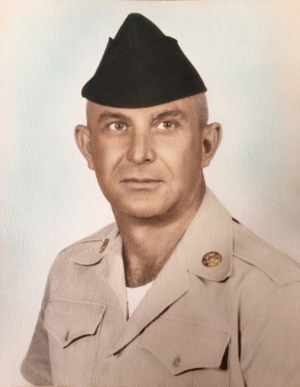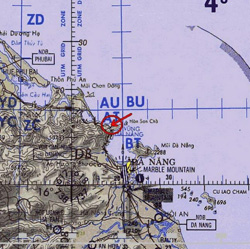
son of Joe Harold Pringle

Remember...
Joe Harold Pringle
1929-1968
"Every day courage has few witnesses. But yours is no less noble because no drum beats for you and no crowds shout your name."
Robert Louis Stevenson
Joe Harold Pringle was born on June 28, 1929, to Acel D. and Nellie M. Cunningham Pringle at their farm near Vandalia, Lewis County, West Virginia. He grew up there with his parents and two younger sisters, Janet E. (married name: Tenney) and Linda K. (married name: Riffle). He attended White School, a one-room schoolhouse along the Horner Route from 1935 until he graduated in 1943. He attended Weston High School until May 1945 but left to work on his family's farm fulltime. Lewis County had a population of about 18,000 at that time. The stock market crash of 1929 and Great Depression had a moderate impact on the area, which was mostly agriculture, glass blowing, and mental health care through the Trans-Allegheny Lunatic Asylum in Weston, about 20 miles to the west of his home.
Joe enlisted in the U.S. Army on July 24, 1946, and entered the service at the induction center located at Fort Hayes, Columbus, Ohio. From there he was shipped to the reception center at Camp Atterbury, Indiana, and transported to the Army Training Center at Fort Knox, Kentucky, in August 1946. At Fort Knox, he completed Basic Combat Training (BCT) and Advanced Individual Training (AIT) and was awarded the military occupation specialty (MOS) #345, Truck Driver, Light Trucks, at the end of September 1946. His first duty was to report to the Overseas Replacement Center at Camp Stoneman, California, in October 1946, where he took a troop ship on November 21, 1946, to his first overseas assignment in the post-World War II occupied territory of Korea. He served with the 63rd Infantry Regiment as a scout and rifleman from December 10, 1946, until March 10, 1948, and returned on another troop ship to Camp Stoneman on March 22, 1948. Korea had been a territory of Japan prior to World War II, and anyone stationed there after the war would be considered a veteran of that war until 1948.
After returning from Korea in 1948, he spent some time at Camp Stoneman, where he met and married Irene Pamplin in May of 1948. They had two children, Patricia J. and James E. Pringle. He would report to the Overseas Replacement Center at Camp Kilmer, New Jersey, to be shipped to Trieste, Italy, and assigned to the 9th Truck Company from August 1948 until February 1949. He left the U.S. Army on February 1, 1950, and returned with his family to West Virginia, where he had various civilian jobs. During the time he left active duty, he enlisted in the Army Reserves on June 21, 1950, for three years as a member of A Battery, 374th Field Artillery Battalion, in Weston, West Virginia. He would eventually divorce Irene in 1954.
He returned to active duty at the processing center at Fort Jackson, South Carolina, on July 14, 1954. He then reported to the Overseas Replacement Center at Fort Lewis, Washington, where he served in Eta Jima, Japan, and Naha, Okinawa, from August 1954 until July 1956. While there, Joe completed his GED and was awarded his diploma through the West Virginia Department of Education on December 23, 1955. He would have various assignments in the United States, Germany, and Korea before being assigned to the U.S. Army Recruiting Station at Fort Hayes in Columbus, Ohio, in October 1960. While serving as the truck master at the recruiting station, he was introduced to Grace I. Haynes. They would marry in August 1961 and have two children, Fred J. and Robert D. Pringle. Sergeant First Class Pringle would later be stationed again in Germany and return stateside at Camp Drum, New York, prior to being alerted for Vietnam in 1967.
The Vietnam War was a conflict between the communist government of North Vietnam and South Vietnam with massive assistance from the United States. During this time many countries in Asia were heavily influenced or forced to live under the Communistic rule of law. This form of government promised that all the citizens were equal on all aspects of life; however, they would learn that their freedoms were dramatically limited with no ability to escape. Western powers saw this as a global threat. President Dwight D. Eisenhower believed a domino effect would ensue if the U.S. didn't provide a means to stop the spread of communism to other Asian countries not already under communist rule. He would send around 800 advisors at first to Vietnam to protect our interests and support the French in the first Indochina War, but eventually the U.S. would send more money and troops over the coming years. ("Roots of the Vietnam War," History.com, accessed 12 April 2019, https://www.history.com/topics/vietnam-war/vietnam-war-history.)
The official start of the Vietnam War came when President Lyndon B. Johnson was given power by Congress to send troops due to the Gulf of Tonkin incident. The U.S. involvement in Vietnam was over 16 years, from 1959 until April 30, 1975. The U.S. lost 58,220 service members, 2,583 members were listed missing in action (MIA), and over 300,000 suffered physical and mental injuries. Total number of people killed during the conflict was 1,376,408 with an estimated 1,100,000 of those deaths incurred by the North Vietnamese. Troop buildup was the largest during the mid-1960s, especially after the Tet Offensive in 1968, and the need for air mobile units was in great demand. (Kenny Rogers, "How Did the Vietnam War Start?" accessed 12 April 2019, https://thevietnamwar.info/how-did-the-vietnam-war-start/.)
On February 2, 1968, Sergeant First Class Pringle and four others were on a maintenance mission from Camp Evans, Quang Tri Province, to Chu Lai, South Vietnam, when the air traffic controller lost both radio and radar contact with the helicopter on its approach to the Da Nang Airbase. All attempts to re-establish communication failed, and a visual reconnaissance of the last known area where the helicopter lost communications failed to turn up the helicopter and its crew. Sfc. Joe H. Pringle, along with the pilot, crew chief and two others aboard UH-1H with Tail No. 66-16442 were listed as missing in action.
 Map indicating where UH-1H (Tail No. 66-16442) was located. Courtesy Task Force Omega, Inc. |
On May 28, 1968, a U.S. recovery team located a crash and burned UH-1H helicopter with tail number 16442 in a heavily wooded area 12 miles north of the Da Nang Airbase. Searchers found an ID tag belonging to Sfc. Pringle along with several weapons and some human bone fragments. All remains were transferred to the U.S. Army Mortuary in Da Nang and subsequently determined to be unidentifiable. Without any further evidence, Joe and the other four members of UH-1H 66-16442 remained listed as MIA. There have been several attempts to locate the crash site over the years, but with no success. The Defense POW/MIA Accounting Agency (DPAA) has scheduled a joint investigation of Sergeant Major Pringle's case in August/September 2019 in which they will perform a five-day survey of the site. They are trying to relocate the crash site and attempt to recover any further items not found from the May 1968 recovery mission. ("Pringle, Joe Harold," Task Force Omega, accessed 12 April 2019, http://taskforceomegainc.org/p052.html.) |
While listed as MIA, Sfc. Joe H. Pringle was promoted to master sergeant on January 3, 1969, and later to sergeant major on December 1, 1974. On 26 October 1978, Sergeant Major Pringle's status was changed from "Missing in Action" to "Presumptive Finding of Death." Although the U.S. Army declared Joe H. Pringle dead in 1978, his family holds out hope to find out what happened to him
His awards include the Bronze Star (awarded March 10, 1968), the Purple Heart (awarded posthumously October 29, 1980), the Army Air Medal, 7th Award (awarded August 21, 1968), the Good Conduct Medal with bronze clasp with four loops (awarded January 12, 1968), the World War II Victory Medal, the Army Occupation Medal with Japan clasp for service in Korea, the National Defense Service Medal with service star, the Vietnam Service Medal, the Republic of Vietnam Campaign Medal with 1960 device, the Air Crewman Badge (awarded December 4, 1967) and the Sharpshooter Badge with rifle and carbine bars. (Some information regarding medals and memorials is from "Joe Harold Pringle," HonorStates.org, accessed 12 April 2019, https://www.honorstates.org/index.php?id=293416.)
Article prepared by Haleema Boukhemis and SFC (Ret) Johnathan Normand, with the assistance of LTC (Ret) Fred J. Pringle, son of SGM Joe H. Pringle, George Washington High School JROTC
April 2019

West Virginia Archives and History welcomes any additional information that can be provided about these veterans, including photographs, family names, letters and other relevant personal history.